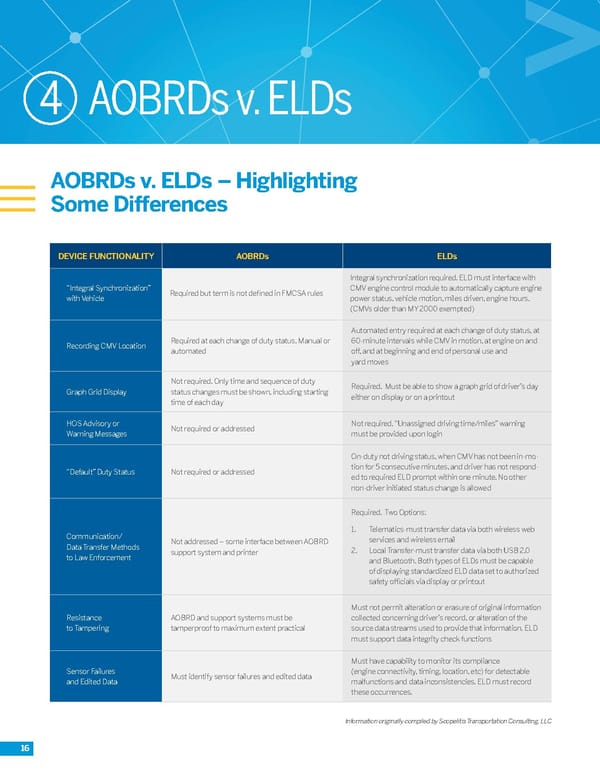4 AOBRDs v. ELDs AOBRDs v. ELDs – Highlighting Some Differences DEVICE FUNCTIONALITY AOBRDs ELDs Integral synchronization required. ELD must interface with “Integral Synchronization” Required but term is not defined in FMCSA rules CMV engine control module to automatically capture engine with Vehicle power status, vehicle motion, miles driven, engine hours. (CMVs older than MY 2000 exempted) Automated entry required at each change of duty status, at Recording CMV Location Required at each change of duty status. Manual or 60-minute intervals while CMV in motion, at engine on and automated off, and at beginning and end of personal use and yard moves Not required. Only time and sequence of duty Required. Must be able to show a graph grid of driver’s day Graph Grid Display status changes must be shown, including starting either on display or on a printout time of each day HOS Advisory or Not required or addressed Not required. “Unassigned driving time/miles” warning Warning Messages must be provided upon login On-duty not driving status, when CMV has not been in-mo- “Default” Duty Status Not required or addressed tion for 5 consecutive minutes, and driver has not respond- ed to required ELD prompt within one minute. No other non-driver initiated status change is allowed Required. Two Options: 1. Telematics-must transfer data via both wireless web Communication/ Not addressed – some interface between AOBRD services and wireless email Data Transfer Methods support system and printer 2. Local Transfer-must transfer data via both USB 2.0 to Law Enforcement and Bluetooth. Both types of ELDs must be capable of displaying standardized ELD data set to authorized safety officials via display or printout Must not permit alteration or erasure of original information Resistance AOBRD and support systems must be collected concerning driver’s record, or alteration of the to Tampering tamperproof to maximum extent practical source data streams used to provide that information. ELD must support data integrity check functions Must have capability to monitor its compliance Sensor Failures Must identify sensor failures and edited data (engine connectivity, timing, location, etc) for detectable and Edited Data malfunctions and data inconsistencies. ELD must record these occurrences. Information originally compiled by Scopelitis Transportation Consulting, LLC 16
 Roadmap to the ELD Mandate Page 15 Page 17
Roadmap to the ELD Mandate Page 15 Page 17